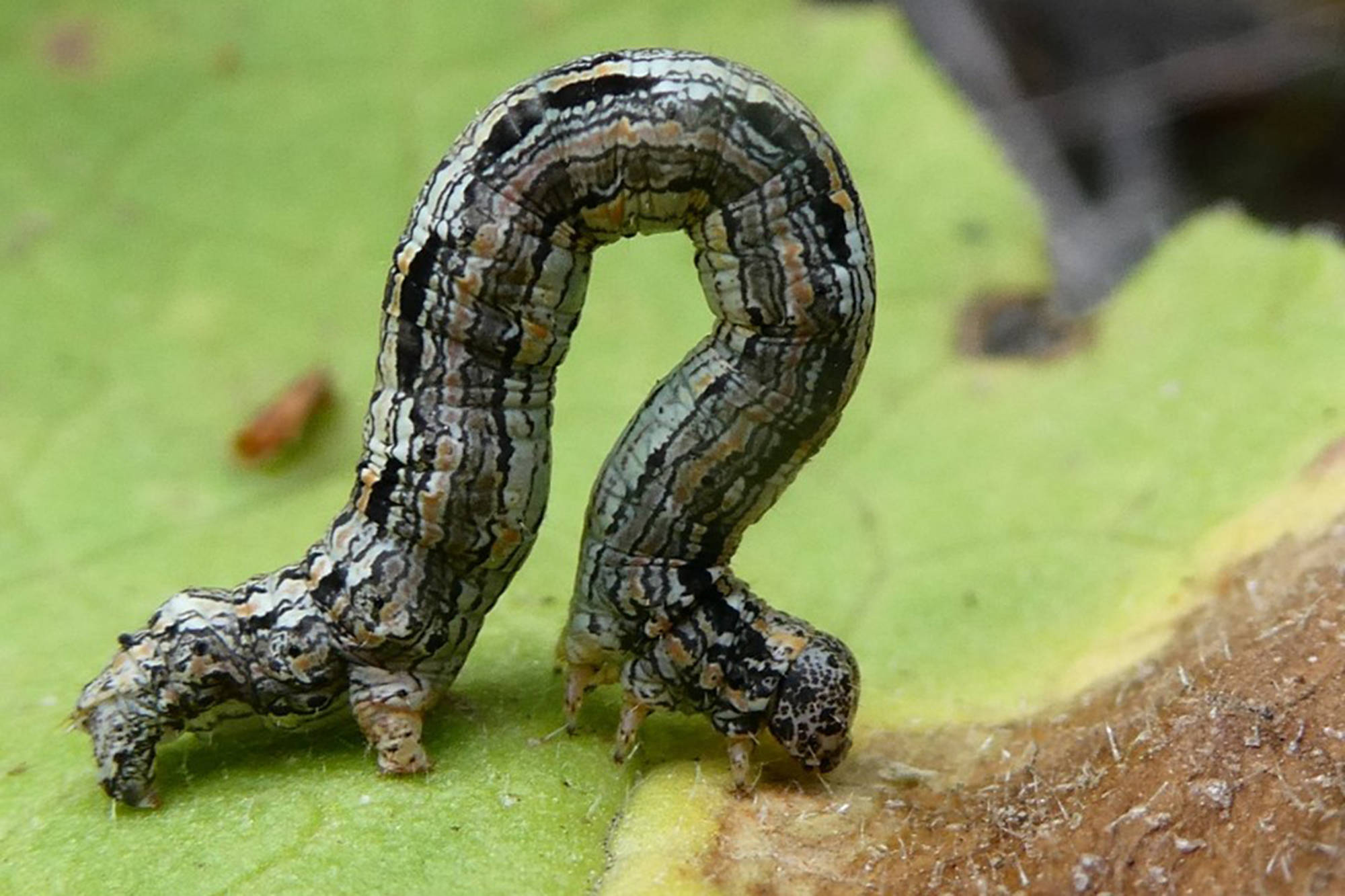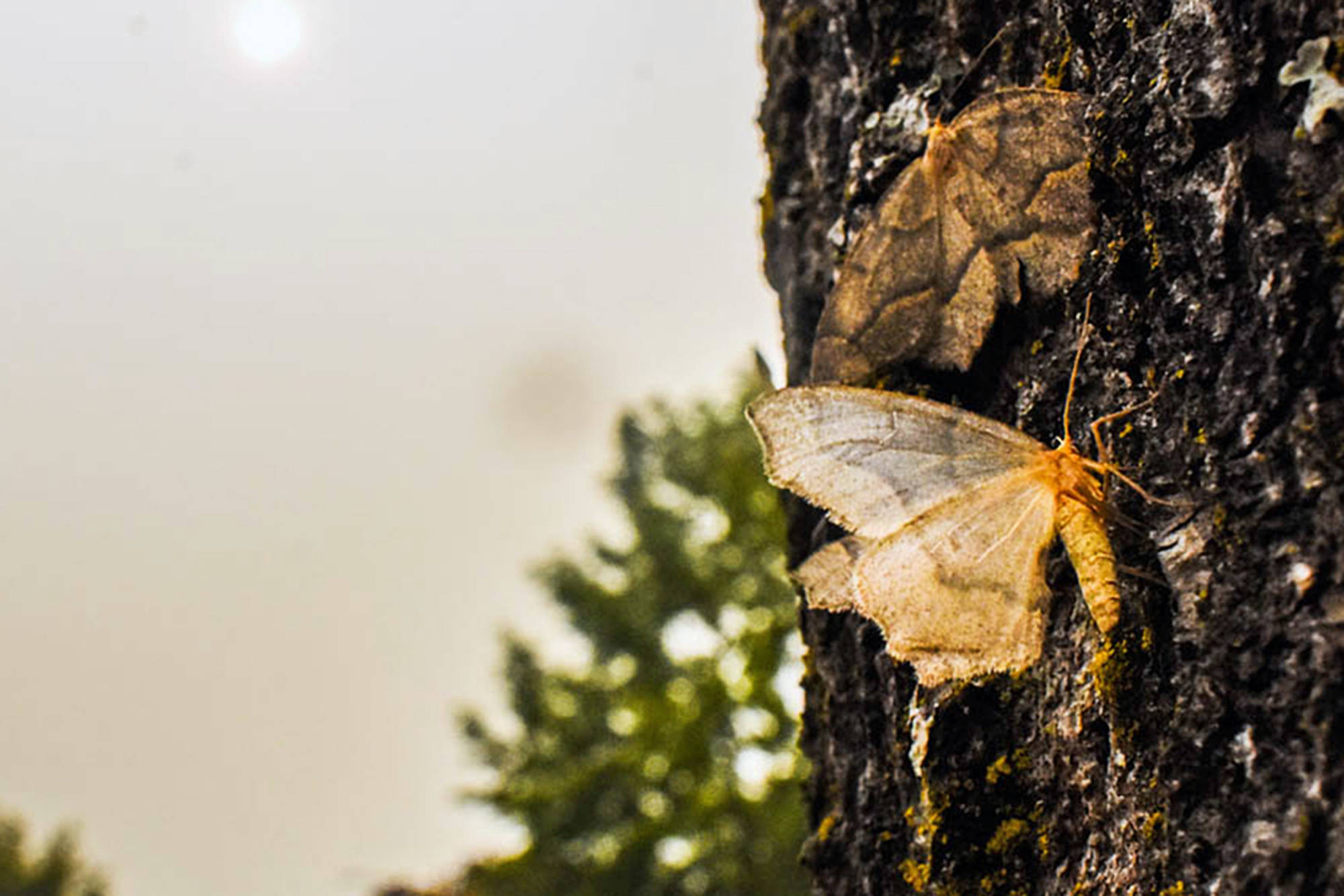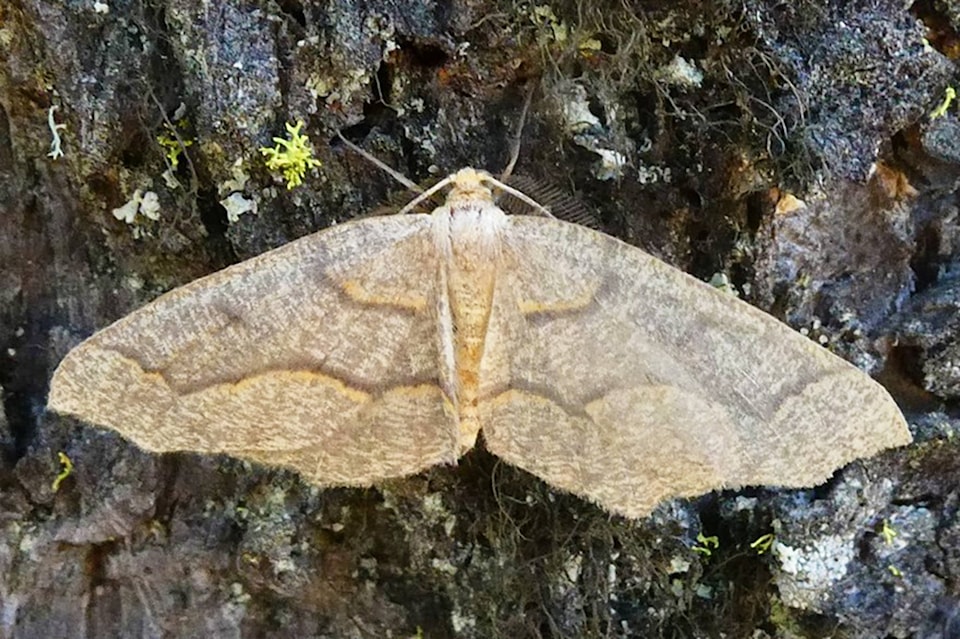As with the butterfly, the flapping of the Western hemlock moth’s wings is not without wide-ranging implications.
An outbreak of the native moth species is being reported in the Lower Mainland and in the Interior, including communities throughout the Columbia Shuswap Regional District.
Lorraine Maclauchlan, a B.C. forests ministry entomologist, said outbreaks of the moth occur about every nine to 11 years in the Interior, and every 10 to 20 years along the Coast, and usually last between two and three years.
Notice an increase in moths lately? An outbreak of the Western Hemlock Looper in the Vancouver area is to blame. But don’t worry — your sweaters are safe. This species feeds on foliage.@ubcforestry Prof. Richard Hamelin spoke with @News1130: https://t.co/2Le64je448 pic.twitter.com/upaTAaBK7L
— University of British Columbia (@UBC) September 11, 2020
“The larvae – commonly called loopers or inch worms – feed from June through August and can strip trees of their foliage in a single season, sometimes killing large swaths of forest,” Maclauchlan explained in an email. “The moths emerge in September and can be seen in trees, on the ground and resting on tree trunks until early October. The moths are mating and laying eggs during this time.”
Outbreaks of the moth typically occur in hemlock stands, but occasionally they will erupt among stands of Douglas fir – something that has been seen this year. The outbreak is expected to increase in size next year, and the province is concerned about the impact it will have on Douglas fir stands.
“These outbreaks are a natural part of the forest ecosystem…,” said Maclauchlan. “This outbreak is a concern because it may kill or weaken an already susceptible and highly pressured forest resource – both from a habitat and timber production standpoint.”
Maclauchlan said high numbers of the moths are being seen in the Clearwater Lake area, the North Shuswap, Mabel and Sugar lakes and around Kamloops, among other areas, and the province is currently surveying and assessing sites for consideration of targeted control programs next summer using the biological insecticide Btk (Bacillus thuringiensis), which targets the larvae. Maclauchlan said Btk has been used by the ministry for past outbreaks in high priority areas, to protect critical habitat and key Crown land.
Outbreaks were likely not as extensive in the Shuswap in the past, said Maclauchlan. However, along Highway 1, east of Revelstoke (where the current outbreak is also occurring), Maclauchlan said you can see evidence of past looper-caused mortality, where large areas of forest were killed.
The last outbreak, she said, occurred around 2011-12 in the Revelstoke drainage and near Serpentine River (Blue River), and was not as large.
“Most outbreaks are away from towns and major roads so are not visible to the public,” said Maclauchlan. “This outbreak is a bit different in that it is in lower elevation fir stands.”
North Shuswap resident Jim Cooperman believes the outbreak to be far larger than what might be deemed normal, as he has never seen so many moths in Douglas fir stands.
Read more: Tussock moth infestation in Cariboo is farthest north ever recorded in B.C.
Read more: Insects disappearing
Read more: New study is first full list of species that only exist in Canada
“Consequently, there should be concern that this large outbreak may be related to climate change, and like the pine beetle explosion, which also did not conform to existing scientific knowledge, it could lead to the death of too many trees,” said Cooperman, adding this could lead to many more problems, including increased fire risk, increasing the number of fir bark beetles thus leading to more dead trees and impacts to water supplies.
“No one would want to see our Douglas fir forests die.”
Salmon Arm entomologist Art Borkent takes a more holistic view of the Western hemlock moth, noting it is one of the thousands of insects that play an important role in supporting the biodiversity of healthy forests.
“There is a relationship between these trees and their pests and it’s an evolutionary relationship,” said Borkent. “There’s the battle between species, between refining what they are and their response to attacks, whatever it is – (they) develop resistance…
Borkent said trees impacted by the moth can become deformed, providing excellent habitat for other insects and for birds.
“And, in the meantime, where insect populations have crashed, we suddenly have a species with larvae all over the place. There’s a whole bunch of birds out there going, whew!” said Borkent.
As with past Western hemlock moth outbreaks, Borkent said the current one will run its course.
“The looper has been here for millions of years… It has its own parasites, its own regulators, and the population will build like this maybe two years, maybe even three, and then boom, they get nailed. And they become very rare.”
Like us on Facebook and follow us on Twitter


